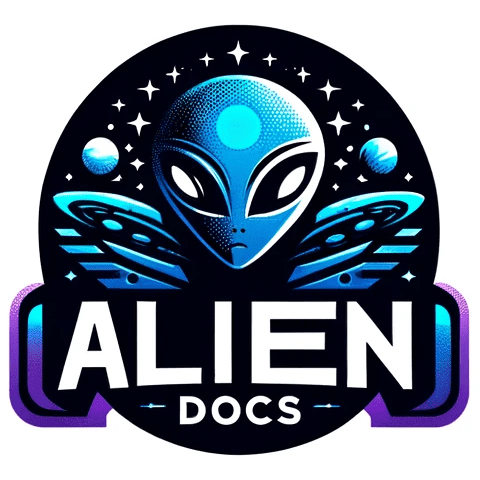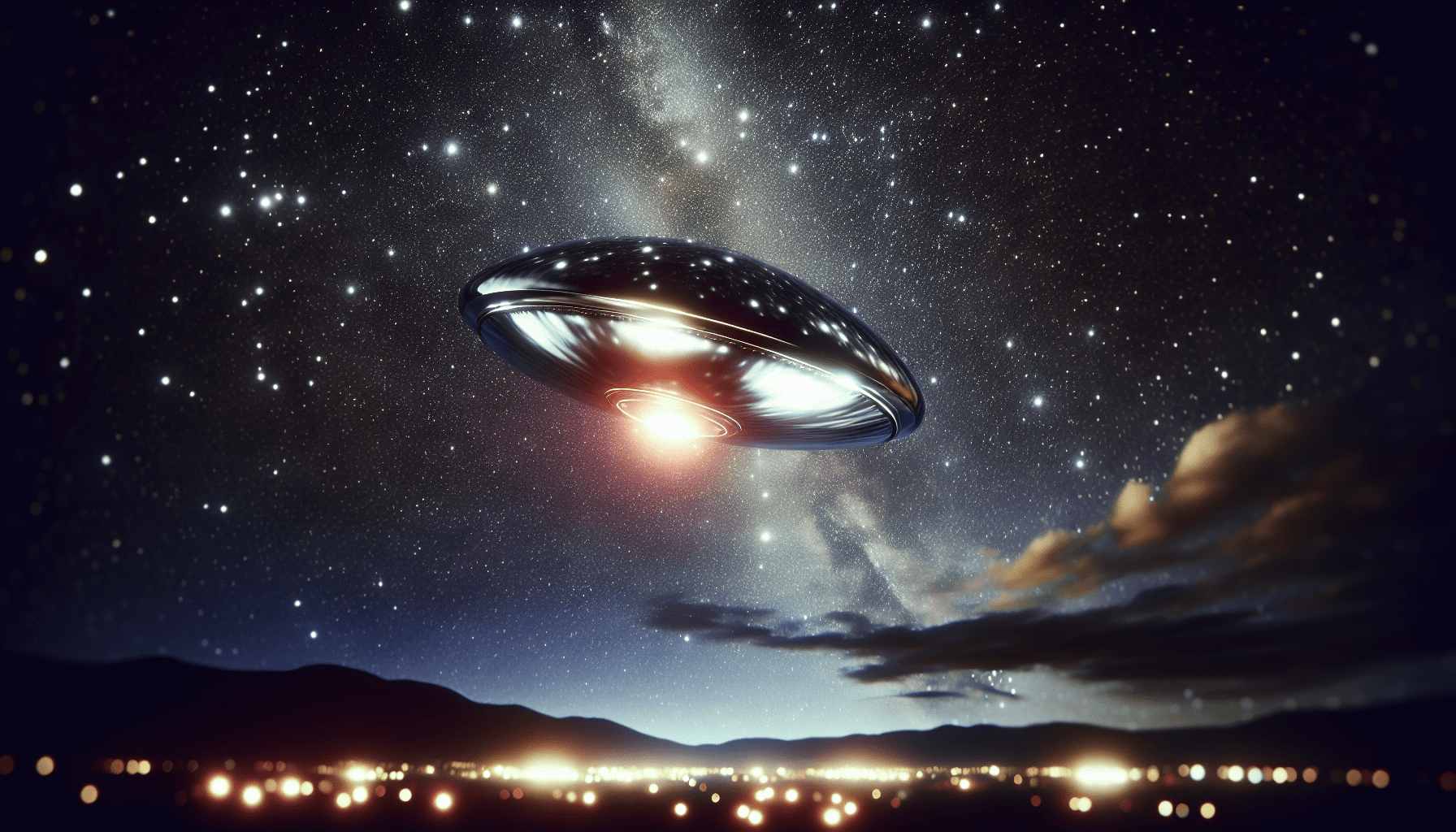So, you’ve had a close encounter of the extraterrestrial kind and you want to prove it to the world. Whether you encountered little green beings or a massive flying saucer, documenting your alien encounter is crucial if you want to convince even the biggest skeptics. Lucky for you, we’ve gathered the best ways to capture and preserve the evidence of your encounter. From taking clear photographs to recording detailed eyewitness accounts, these methods will ensure that your experience with otherworldly beings is not easily dismissed. Get ready to turn even the staunchest doubters into believers as you delve into the world of documenting an alien encounter for evidence.
1. Video Recording
Video recording is one of the most effective ways to document an alien encounter. To ensure the highest quality footage, it is essential to use a high-quality camera. Investing in a camera with excellent resolution and low-light capabilities will greatly enhance the clarity of the footage. This will allow for clear identification of any alien activity or phenomena.
In addition to having a high-quality camera, it is crucial to ensure stable footage. Using a tripod or stabilizer can help eliminate shaky footage, providing a clearer view of the encounter. It is also advisable to use zoom and focus features to capture any details that may be present during the encounter.
To capture a comprehensive view of the encounter, it is important to capture various angles and perspectives. This can be achieved by setting up multiple cameras in different locations. By doing so, you increase your chances of capturing different aspects of the encounter, which can be valuable evidence for analysis and investigation.
2. Photographs
Photographs play a significant role in documenting an alien encounter. To obtain the best photographs, it is recommended to use a DSLR or a high-resolution camera. These types of cameras have the ability to capture fine details that may not be visible to the naked eye.
When photographing an alien encounter, it is important to focus on capturing details. Take close-up shots of any evidence or objects left behind by the alien. Pay attention to any markings, shapes, or textures that may be unique. A macro lens can be particularly useful for capturing intricate details.
Taking multiple shots from different distances is also crucial. This allows for a comprehensive view of the scene and helps to establish the size and scale of any objects or beings present. Taking a series of photographs can provide a sequential record of the encounter, aiding in the analysis and understanding of the event.
3. Audio Recordings
Audio recordings can provide valuable evidence in documenting an alien encounter. To ensure high-quality audio, it is recommended to use a dedicated audio recorder. These devices are designed to capture sounds with clarity and minimal interference.
When recording audio during an encounter, it is essential to capture clear and distinct sounds. Focus on any unusual noises, such as unidentified voices or unexplained sounds. Omit any background noise or interference that may detract from the clarity of the recording.
In addition to capturing sounds, it is important to describe the surroundings while recording. This includes details such as temperature, weather conditions, and any other relevant environmental factors. This contextual information can contribute to a more thorough analysis of the encounter.
4. Written Documentation
Written documentation serves as a vital record of an alien encounter. When recording a detailed narrative, it is important to include specific details about the encounter. Describe the date, time, and location of the event to provide context and help establish a timeline.
In the written documentation, it is crucial to describe the alien’s appearance and behavior. Include information about its physical attributes, such as height, weight, and any distinguishing features. Document its behavior, any interactions with the environment or witnesses, and any other notable actions.
Including witness statements within the written documentation can provide additional perspectives and corroborate the encounter. Ensure that witness statements are recorded separately, and specify the time and location of each statement. This will help establish the credibility and accuracy of the witnesses’ observations.
5. Sketches or Drawings
Sketches or drawings can offer a visual representation of an alien encounter. When creating sketches, it is important to draw the alien’s features and body accurately. Pay attention to specific details, such as facial structure, body shape, and any distinctive characteristics. Sketches can help provide a visual record of the encounter and aid in the identification and study of the alien.
Using colored pencils to capture details can enhance the accuracy and realism of the sketches. Take note of any unique characteristics or markings that are present on the alien. This level of detail can be crucial in distinguishing one alien encounter from another, providing valuable evidence for further analysis.
Including annotations or notes alongside the sketches can provide additional context and information. Note any specific movements, gestures, or behaviors exhibited by the alien. These annotations can offer insight into the encounter and assist in understanding the nature of the event.
6. Physical Evidence Collection
Collecting physical evidence left behind by the alien is essential for documenting an encounter. When collecting traces, it is important to use gloves to avoid contamination. This ensures that any potential evidence is not compromised or contaminated by external factors.
Preserving the evidence in a sealed container is crucial to maintain its integrity. The container should be airtight and labeled with relevant information, such as the date, time, and location of the encounter. Preserving the evidence in this manner allows for further examination and analysis by experts.
It is important to document the collection process thoroughly, including photographs and written descriptions. Record any details about the environment in which the evidence was found and note any relevant observations. This documentation will strengthen the evidentiary value of the physical evidence.
7. Witness Statements
Interviewing witnesses and obtaining their statements is a crucial step in documenting an alien encounter. When conducting witness interviews, it is important to do so separately. This ensures that each witness’s account remains unbiased and unaffected by the perspectives of others.
During the interviews, record the witnesses’ observations in detail. Encourage them to provide specific information about the encounter, such as the appearance of the alien, its behavior, and any interactions or conversations that took place. Taking note of their emotional state and reactions is also important, as it can add context to the encounter.
Documenting the witnesses’ credibility is crucial for evaluating the reliability of their statements. Include relevant information about the witnesses, such as their background, profession, and any expertise they may have. This information can help establish the credibility and veracity of their observations.
8. Expert Analysis
Seeking professional expertise in the field of alien encounters can provide valuable insight and analysis. Submitting the evidence for examination by experts is crucial in verifying and understanding the encounter. Experts can provide specialized reports or testimonies that can support the authenticity and significance of the encounter.
When seeking expert analysis, it is important to choose professionals with relevant qualifications and experience. Look for individuals or organizations that specialize in alien encounters or related phenomena. Their expertise and knowledge can contribute to a more comprehensive understanding of the encounter.
Obtaining specialized reports or testimonies from experts can add credibility and weight to the evidence. These reports can provide scientific analysis, enhance understanding of the encounter, and contribute to the broader study of alien encounters.
9. Data and GPS Records
Analyzing data and GPS records associated with an alien encounter can provide valuable information and insights. When reviewing data, it is important to check for any anomalies or significant changes. This may include unusual electromagnetic readings, sudden shifts in temperature, or unexplained disruptions in technology.
Preserving GPS records of the encounter is crucial in establishing the precise location and time of the event. The GPS data can corroborate witness reports and provide additional evidence for analysis. Analyzing this data can reveal patterns or correlations that may deepen our understanding of the encounter.
Evaluating electromagnetic disturbances is another important aspect of documenting an alien encounter. It is essential to analyze any disruptions or anomalies in electromagnetic fields during the event. These disturbances can provide valuable evidence of extraterrestrial activity and contribute to the scientific study of alien encounters.
10. Psychological Evaluation
Consulting with a qualified psychologist is an important step in documenting an alien encounter. The psychological evaluation focuses on assessing the witnesses’ mental and emotional state before, during, and after the encounter. This evaluation can help determine the impact of the encounter on the witnesses’ psychological well-being.
During the evaluation, the psychologist will assess the witnesses’ mental and emotional state, looking for any signs of stress, trauma, or psychological effects. Documenting any psychological effects, such as anxiety, fear, or changes in behavior, is essential in understanding the full impact of the encounter.
Including the results of the psychological evaluation in the documentation provides a holistic view of the encounter. It adds valuable insight into the witnesses’ experiences, emotions, and mental state, contributing to a more comprehensive understanding of the event.
In conclusion, documenting an alien encounter for evidence requires a comprehensive and systematic approach. Utilizing high-quality video recording, detailed photography, clear audio recordings, written documentation, sketches or drawings, physical evidence collection, witness statements, expert analysis, data and GPS records, and psychological evaluation will ensure a thorough and credible documentation process. These methods, when used together, can contribute to the evidence and analysis of an alien encounter, providing a scientific and objective perspective on this intriguing phenomenon.

